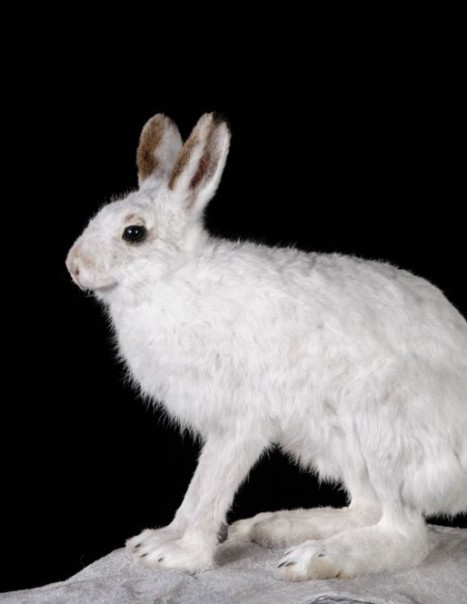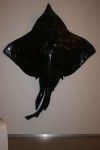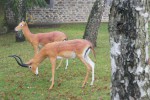Mountain hare – Lepus timidus
Mountain hare – Lepus timidus
The mountain hare is related to the common hare but it does not cross with it. Its characteristic is to change color depending on the season. Its coat turns white in the fall to be completely white in winter. Only the tip of its ears are black. In the spring, brown hair reappear to give it the same color as a common hare, with the exception of its tail, which is always white. The female hare like the brown hare, “hase” has a peculiarity : it can be fertilized again before farrowing. It therefore carries simultaneously young ready to be born and embryos of the next litter. This is called the “superfluous”.
Sexual maturity is reached at 1 year and the pregnancy in female lasts 45 to 63 days. The range is from 2 to 5 small in amount of 1 to 3 litters per year.
Its lifespan is about 12 years. The adult body has a length of 45 to 62 cm and a weighing 2 to 5.8 kg.
The breeding season is between February and August. The hares are born with their full coat and eyes open and can move on after birth. It is not often lonely and living in community. It is nocturnal and crepuscular. It moves very fast (60-70 km/hour), running and leaping. It inhabits forests and pastures, from 1200 m and is found up to the snowline in the Alps, hence its German name “Hare snow” .
It eats grass, moss, berries, bark and buds. Predators are terrestrial carnivores such as the ermine, red fox, wild cat, wolf, lynx, birds of prey, eagle owl, golden eagle, tawny owl, black tip and crow for hares.
The species suffered heavy losses during the snowy winters.





